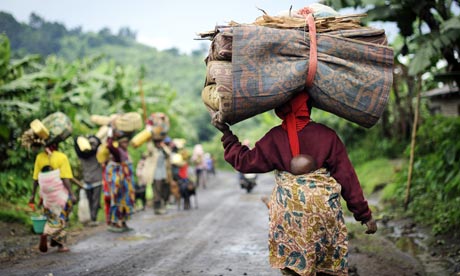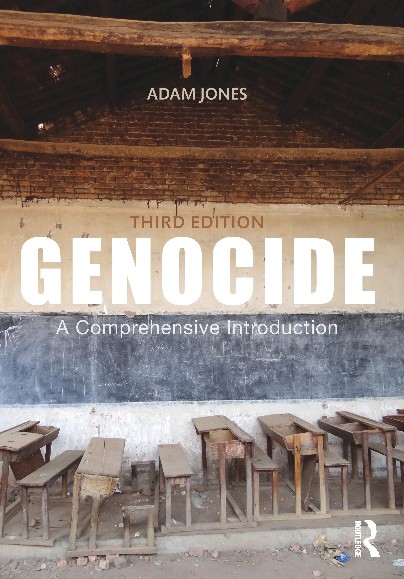 |
| "The number of internally displaced people in DRC is now believed to be 2 million -- its highest level in three years." (Phil Moore/AFP/Getty Images) |
By Simon Tisdall
The Guardian, May 31, 2012
"Villagers and townspeople in eastern Democratic Republic of Congo are facing 'extreme violence' with atrocities including mass executions, abductions, mutilations and rapes being committed almost daily, according to aid workers in Goma, the capital of North Kivu province. Fighting between the government army, the FARDC, and a group of mutineers led by a fugitive UN war crimes indictee, Bosco Ntaganda, has escalated since April. Armed militias including the notorious FDLR, a Rwandan rebel group based in Congo, have joined the fray in a multi-fronted battle for territory, money and power. But the violence has received relatively little international attention so far. 'The crisis in Congo is the worst it has been for years. The activity of armed groups has exploded, with militias making the most of the chaos to prey on the local population,' Samuel Dixon, Oxfam's policy adviser in Goma, said on Wednesday. 'Large areas of [North and South] Kivu are under the control of different armed groups -- some villages are being terrorised from all sides, with up to five groups battling for power. Local people are bearing the brunt of extreme violence, facing the risk of massacre, rape, retaliation, abduction, mutilation, forced labour or extortion ... In less than two months, more than 100,000 people in North Kivu have been forced to flee,' Dixon said. Expressing alarm at the deteriorating situation, the UN refugee agency said the violence had sent tens of thousands of refugees spilling over the border into Rwanda and Uganda, while many more people were internally displaced.
Melissa Fleming, spokesperson for the UNHCR, said UN agencies and the Red Cross would soon begin to distribute relief supplies. 'Some of the displaced report cases of extortion, forced labour, forced recruitment of minors and beatings by armed men,' Fleming said. Aid workers said heightened instability was making it difficult to establish the true extent of the violence and to get supplies to those most in need, who had often taken refuge in remote, inaccessible areas. 'The mutiny in North Kivu is part of a broader picture of insecurity caused by multiple armed groups and by elements of the Congolese forces. Since the FARDC has been fighting the mutiny, other armed groups active in eastern Congo have opportunistically moved into areas left vacant by the army,' an internal NGO field report seen by the Guardian stated. 'In South Kivu in early May 2012, 30 people were killed in Lumenje zone by the FDLR ... During the night of 13 May, at least another 40 civilians lost their lives and 35 were injured following a brutal FDLR attack on Kamananga. This incident took place only 2kms from a Monusco base [Monusco is the name of the UN's 20,000-strong stabilisation force in Congo].' The report went on: 'A letter left by the FDLR at the scene warned of a series of revenge attacks if the opposing group, the Raia [militia], did not stop attacking them. In the last two massacres the FDLR mutilated the dead to discourage further actions against them. In Mambas territory, a mai mai [militia] group reportedly raped over 70 women in the second week of May and armed clashes around Itembo allegedly led to the death of 17 civilians.' Overall, the total number of internally displaced people in Congo is now believed to be at its highest level in three years: up from 1.7 million to 2m. [...]"














No comments:
Post a Comment
Please be constructive in your comments. - AJ